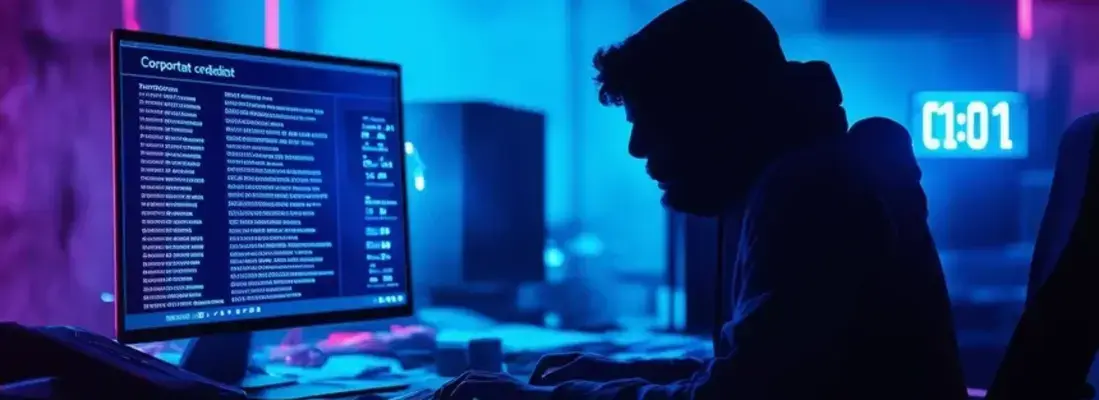Your Complete Guide to a Successful Cyber Attack Tabletop Exercise
Date: 8 April 2025

If you read our monthly cyber attack updates, you’ll know how cyber crime is everywhere. Cyber attacks and ransomware attacks are becoming increasingly sophisticated. Nobody knows how to stop them altogether. But what we can do is fortify defences with the greatest agility and precision. And one of the most important tools in cybersecurity preparedness is the Cyber Security Tabletop Exercise.
In this guide, we delve into all the details of Cyber Tabletop Exercises (also known as Cyber Drills). We show you what makes them critical to boosting your cyber resilience.
This comprehensive guide includes:
-
- What are Cyber Drills?
- Why are Cyber Attack Drills so important?
- Best Practices for a Successful Cyber Tabletop Exercise
- Key Benefits of Cyber Tabletop Exercises
- Key components of an effective Cyber Drill Exercise
- Who should participate in Cyber Tabletop Exercises?
- Cyber Tabletop Exercise Scenarios to rehearse for
- Why Choose Specialised External Facilitators for your Cyber Security Drills?
What are Cyber Crisis Tabletop Exercises?
Cybersecurity tabletop exercises test your organisation’s ability to successfully respond to cybersecurity incidents. They have emerged as a key component of cyber incident management.
These cyber drills are focussed on the human element. They simulate cyber tabletop exercise scenarios that mimic real-world cyber threats to your specific organisation. They help you see how well your security team and other key people can respond to security incidents. They then allow you to refine your cyber incident response plans and strategy. You can also identify the need to provide more training in Cyber Incident Planning and Response if required.
These exercises should include key stakeholders. They need a chance to practice the incident response and disaster recovery plans. With regular Tabletop Exercises, your incident response plans, ransomware response checklists and other communication templates become a part of the muscle memory. This means they are less likely to make a wrong decision or act quickly during the panic of a cyber attack.
The best part is that this testing takes place in a controlled setting. It does not disrupt regular business operations at all. Think of it as an inexpensive Pentest! It allows you to evaluate your organisation's ability to detect, respond to, and recover from cyber incidents. The debrief session is an ideal chance to plug any gaps that currently exist in your cybersecurity posture.
Why are Cyber Attack Tabletop Exercises So Important?
Cyber Attack Tabletop Exercises work like flight simulation training for pilots. Pilots use a flight simulator every two years. The flight simulator presents pilots with several aviation emergencies and tests how they respond to those potentially disastrous situations.
To pass their simulation exam, the pilot must be really well-versed with the technology of the aircraft. They also need to be conversant with the checklists provided by the airline and the aircraft manufacturer.
These flight simulators test the pilot’s skills. They also let pilots practice for emergencies they don’t often face in the air. If they have an engine failure or a bird strike, they know what to do. They have practiced for this many times during their flying career.
This kind of instinctive decision-making is exactly what Cyber Tabletop Exercises can achieve when done right and often.
This analogy, hopefully, explained what makes Cyber Drills critical in the current threat landscape. In the next section, we look at specific ways in which you can make the most of your Tabletop Drills.
Best Practices for Conducting Cyber Attack Tabletop Exercises
Cyber Tabletop Exercises must be conducted with a razor-sharp focus on the scenario being rehearsed and the outcomes expected. While we always recommend hiring an external facilitator for your cyber drill, it may not always be possible. You can always check out our Masterclass on How to Conduct an Effective Cyber Tabletop Exercise.
By following the points below, you will be better prepared to plan and run a successful internal workshop.
- Define clear objectives: Clearly define the objectives and desired outcomes of the tabletop exercise. Having clear goals is important. It helps keep the exercise focused and meaningful. This applies to testing incident response plans, checking communication channels, and finding vulnerabilities.
- Develop realistic and detailed scenarios: Design scenarios that are actually relevant to your organisation and organisational context. The threats discussed should be those that could actually impact your business and its most critical assets. Use our comprehensive list of scenarios and pick and improvise on one that suits your needs the most. This also enables participants to engage with the exercise more effectively and draw practical insights from the experience.
At Cyber Management Alliance, our skilled facilitators spend a lot of time with the client. We take time to understand the business and its different functions. We work with the client representative to create a scenario that will resonate with the participants. - Choose the stakeholders carefully: Involve individuals from different departments and levels of seniority to gain a comprehensive understanding of the organisation's cybersecurity preparedness. This diversity helps uncover different perspectives, identifies communication gaps, and highlights areas where coordination is crucial.
- Encourage open and constructive discussions: Foster an environment where participants feel comfortable sharing their insights, concerns, and ideas. Encourage open discussions to facilitate knowledge sharing, collaboration, and the exploration of alternative approaches to addressing cyber threats.
- Document lessons learned: After the exercise, the facilitator shares a report or summary. This includes their observations and how each participant contributed. This report contains critical key takeaways and lessons learned.
This executive summary serves as a valuable resource for future reference, enabling the organisation to implement necessary improvements and measure progress over time.
The Significance of Cybersecurity Tabletop Exercises
- Realistic Scenario Simulations: Tabletop exercises are great because they imitate real-life attack situations. Ideally, your cyber security drill scenario should be specific to your organisation, industry and geography. The scenario, if created by an expert (more on that later), should feel very real to the team members.
A realistic and custom scenario can show the real impact a cyber attack could have on your business. It builds awareness and encourages participants to think and act as they would during a real information security disaster.
A well-designed Cyber Tabletop Exercise scenario will evolve over layers. The facilitator should introduce new information in different phases. They should use injects at specific times to make the scenario feel real.
- Stakeholder Collaboration: Effective cybersecurity involves collaboration among various departments and teams within an organisation. Tabletop exercises allow different groups to work together. This includes IT, legal, HR, PR, management, and incident response teams. This approach ensures that everyone understands their roles and responsibilities during a cyber crisis.
More importantly, however, it helps participants see the critical role other colleagues and teams play in overall cybersecurity. This tremendously improves inter-departmental collaboration and communication and minimises chances of blame-games during stressful attack situations.
- Evaluation of Incident Response Capabilities: Tabletop exercises serve as a litmus test for the effectiveness of your cyber incident response plans and cyber resilience abilities. They allow for the identification of gaps and bottlenecks in your incident response process.
As you practice your response to problems caused by cyber crime, you will see your organization's weaknesses. In many cases, facets of incident response that you have never thought about will emerge.
These could be as basic as - who will talk to the press about the incident. You might also ask if you need to hire outside cybersecurity experts or Cyber Incident Response Retainer Services.
- Decision-Making Practice: Cybersecurity tabletop exercises offer an opportunity for decision-makers to practise critical thinking under pressure. The scenarios are usually evolving and layered, forcing participants to make quick, informed decisions. This practice enhances decision-making skills and fosters a proactive response to cyber threats.
The primary idea is that participants learn how to think in a crisis. The Cyber Security Drills improve their decision-making skills. They also help them see how important it is to think quickly and calmly under pressure.

Key Components of a Cybersecurity Tabletop Exercise
- Fact Finding - Tabletop exercises have to be in tune with your specific business. Using the analogy above, it makes no sense for a pilot to practice for disasters on an Airbus if he will fly a Boeing. When choosing an external facilitator, make sure they are committed to understanding your business.
- Scenario Development - If your facilitator is making you practise with a generic scenario, run away! The scenario is everything in a cybersecurity drill. That’s why at Cyber Management Alliance we only do bespoke scenarios.
Our facilitators spend a lot of time with the client to create a scenario that’s deeply contextual and extremely relevant to their specific business structure. If the scenario doesn’t feel real, don’t expect real reactions and responses from your team.
- Stakeholder Participation - To make your Cyber Attack Tabletop Exercise successful, you need to choose the correct group of participants. Involve a diverse group of stakeholders, including IT personnel, legal experts, public relations, and management representatives. You may also choose to conduct a specific type of Crisis Exercise in which case the participant group should reflect that.
- Expert Facilitation - This is an absolute essential. Choose a skilled facilitator to lead the exercise. They should introduce new challenges and keep everyone engaged. The facilitator needs a good mix of technical knowledge and people skills. We delve more deeply into this later.
- Documentation - It’s important to thoroughly document the exercise to evaluate where the gaps exist. Documentation also helps in understanding the lessons learned, participants’ responses and feedback and the facilitator’s view on your organisational cyber resilience. Post-exercise analysis and improvement is as important as post-incident analysis is after a security event.
Recommended Participants in a Cyber Tabletop Exercise
It’s important to choose the stakeholders who take part in the Cyber Tabletop Exercise carefully. Depending on the type of exercise - technical, operational or executive - the participants must reflect a good mix of organisational departments.
Here’s a general list of stakeholders we recommend should be involved in Cyber Security Drills:
Executive:
- Board/Directors, CEO, Chairpersons, Executive Directors, Board of Directors
- Executive Leadership (COO, CIO, CISO, IT Director)
- Head of Information Security
- Head of Audit
- Head of Compliance
- Legal Head
- Human Resources Head
- PR & Communications Lead
Technical: -1.jpg?width=400&height=267&name=182104470_m_normal_none%20(1)-1.jpg)
- Systems Architects
- Network Specialists
- Windows / Linux specialists
- Cloud Infra Specialists
- SoC / Security analysts
- IT Security engineers
- Database Administrators
- Technical/Configuration specialist
- Product owners
- Change Management Expert
Operational:
- Crisis Management Team, Cybersecurity Incident Response Team
- Crisis Communications Team
- Middle Management
- Operations Managers
- Legal and Public Relations Team representatives
- Regulatory, Data Privacy Team
- Human Resources Team
- Business Continuity Managers/Teams
Cyber Tabletop Exercise Scenarios to Rehearse For
There is a wide range of cyber security drill scenarios that you can rehearse with. Some of the most common and relevant ones are as under:
- Ransomware Attack
- Supply Chain Attack
- Enterprise system compromise
- Cyber Extortion
- Critical DB Exfiltration
- Azure/AWS Outage
- Active Directory Compromised
- Insider Data Exfiltration
- DDoS Attack on Website
- Financial Systems Compromised
Why Choose Specialised External Facilitators for your Cyber Security Drills?
It's natural for many organisations to want to conduct their cyber drills internally. The motivation usually is that it appears to be a more cost effective and convenient option.
However, in this case, the potential drawbacks far outweigh the benefits. Outsourcing this critical process to experts offers a more neutral, realistic, and comprehensive evaluation of your organisation's preparedness. By doing so, you'll be better positioned to defend against the ever-evolving threat landscape of cyber and ransomware attacks.
It’s important to remember - the cost of hiring a specialised facilitator will never surpass the cost of a mismanaged cyber incident.
Here are some of the most important reasons why you should bring in external expertise:
- Neutrality - When you conduct a tabletop exercise internally, it's challenging to maintain neutrality. Your in-house team may be too close to the organisation's systems and processes, making it difficult to simulate a truly objective and realistic scenario. They also don’t have preference for a particular department over another.
An external facilitator brings an unbiased perspective, ensuring that the exercise closely mirrors the unpredictability of a real-life cyberattack. Further, no participant will feel that the feedback shared by the facilitator is coloured by their personal preferences. This improves the likelihood of everyone working on the post-exercise recommendations seriously.
- Expertise - Cyber attacks are complex and continually evolving. Running an exercise without the guidance of cybersecurity experts can result in oversights and inaccuracies. Experienced facilitators possess in-depth knowledge of ransomware tactics, attack techniques, and malicious software, enabling them to craft compelling scenarios that mimic the latest threats accurately. This expertise is invaluable in helping your organisation identify vulnerabilities and fine-tune your response strategy.Their evaluation and feedback is also more valuable as it is based on years of real-world experience.
- Realistic Testing - An effective tabletop exercise should recreate the chaos and urgency of an actual attack. Professional facilitators have the experience to inject realism into the exercise, challenging your team to make critical decisions under pressure. They can simulate the rapid escalation of a ransomware incident or data breach, allowing your organisation to gauge its readiness and identify areas that require improvement.
- Comprehensive Evaluation - A cyber crisis tabletop exercise isn't just about going through the motions; it's an opportunity to assess your organisation's response capabilities comprehensively. External facilitators can provide objective evaluation of your team's performance, highlighting strengths and weaknesses. Their feedback can inform necessary enhancements to your incident response plan, ensuring that your organisation is better equipped to handle a real ransomware attack. And as discussed above, this feedback is generally more appreciated as it comes from an objective outsider.










